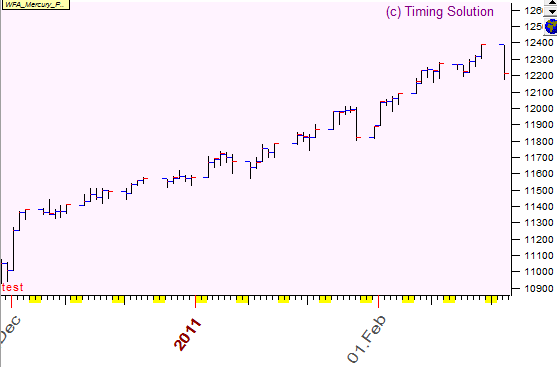
Turbo Cycles is one of the most used modules of Timing Solution. Below you will find practical recommendations regarding the ways to improve a forecast made with Turbo Cycles module. The module itself is described here: http://www.timingsolution.com/TS/Study/Turbo_Cycles/
Example #1: Cyclic and Non Cyclic mode - moving with cycles
We can use cyclic based models of the stock market when the market itself is in cyclic mode. It means that during that period there are cycles that play the main role on the market, and we can use this fact to create forecasting models. The market is not always in that mode. Sometimes the market price chart may look as a straight line, like this one:

this is a trend mode, the market here just follows the trend, and cycles do not play a significant role here. There are also other modes, like sometimes the market moves totally chaotic. According to John Ehlers, the stock market is in cyclic mode approximately 40% of the time. In Timing Solution we use another approach - multi cycle approach. This approach allows to increase cyclic zones (periods when the market is in cyclic mode, though it is difficult to say how many %%).
The following trick is recommended when we would like to figure out whether the stock market in cyclic or non cyclic mode. We perform mini back testing. In order to do that, set Learning Border Cursor (LBC) somewhere prior the last available price bar, like here (right mouse click and highlight "Set LBC .."):
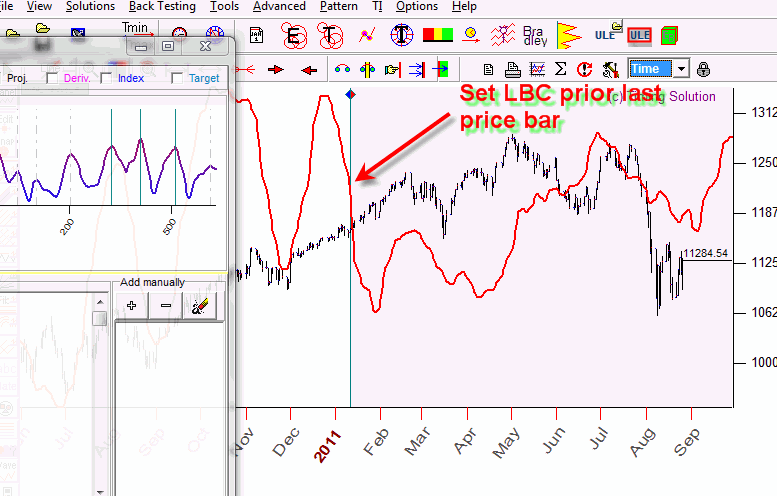
Now watch the projection line after LBC and compare it to real price (till the last price bar):
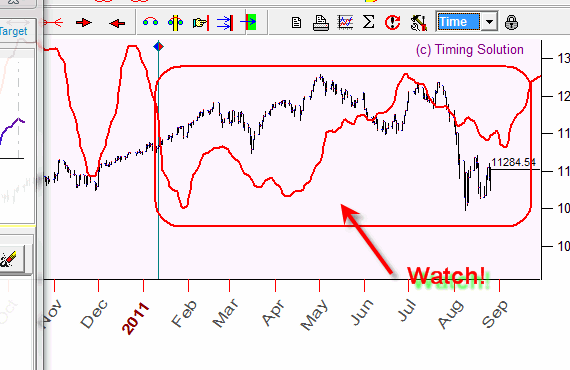
I do not recommend to use any formal criteria here (like a correlation between the price and the projection line), as you may skip important nuances. Do a visual evaluation - like tops mostly coincide with tops on the time scale, and the bottoms with bottoms, though amplitudes of those tops and bottoms may be very different. If there is some similarity between the price and the projection line AFTER LBC, it means that some cycles are still active, and we can use these cycles for the forecast.
To improve this forecast, click ![]() button, and the program will perform the additional optimization of your cyclic
model:
button, and the program will perform the additional optimization of your cyclic
model:
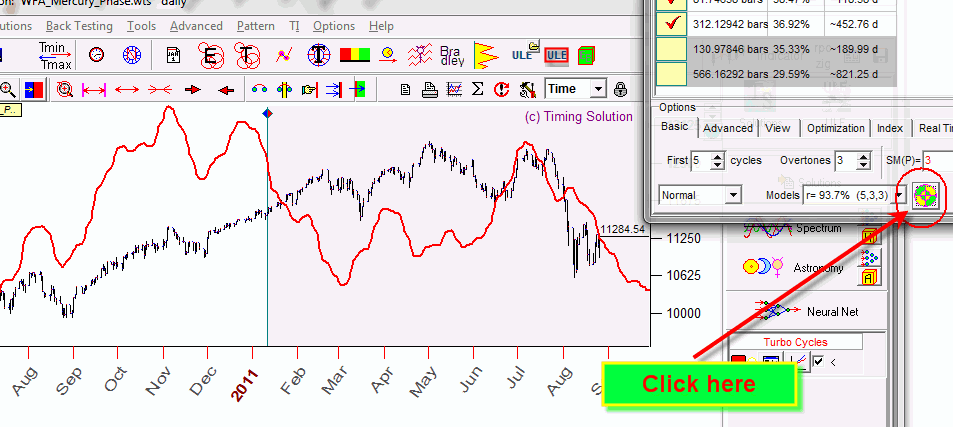
I recommend to try different models listed in this menu:
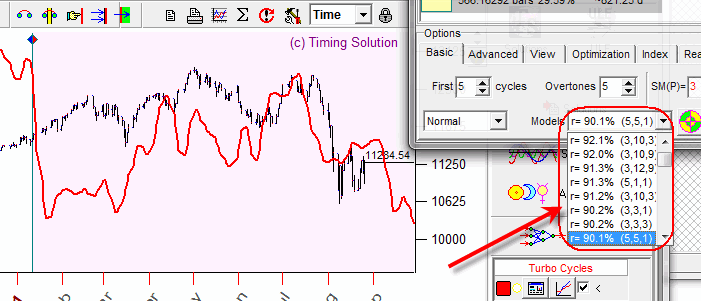
Sometimes it makes sense to play with an inverted projection line varying this parameter:
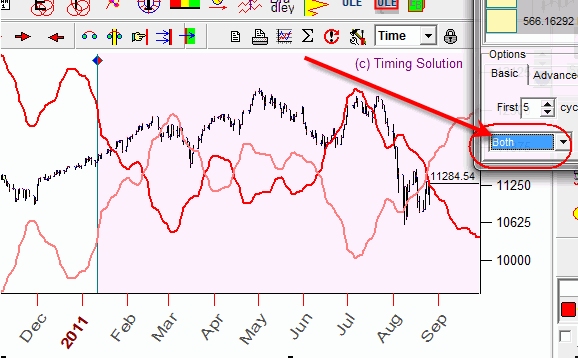
Though I would remind you to be very careful with the inverted solution; it seems to me that this approach is too risky.
Example #2: Reaction effect - try to look at the bigger picture
Another typical pattern looks like this:
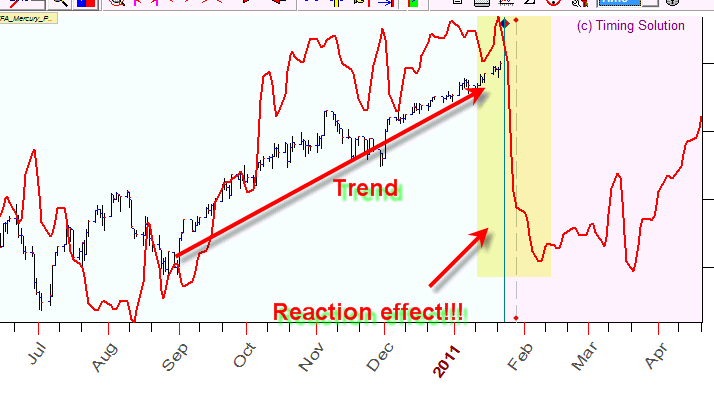
Here we had uptrend movement since September 2010. If we would try to create a cyclic model considering this trend period as the result of some cycle, the moment will come when we face the "reaction effect". In other words, suddenly the price falls down while our model indicates a continuing growth. What is wrong here? Why does it happen?
The answer is simple: cycles that we have considered as the reason for the trend and used to create our models are too short to explain so long uptrend movement. They were not the reason, but only a part of some bigger picture. (Please keep in mind as well that not always we are able to find a cycle/cycles that describes the trend). The possible solution of this problem is trying to involve longer term cycles, looking for that bigger picture. In order to do that, follow these steps:
1) Increase "Max Cycle" parameter:
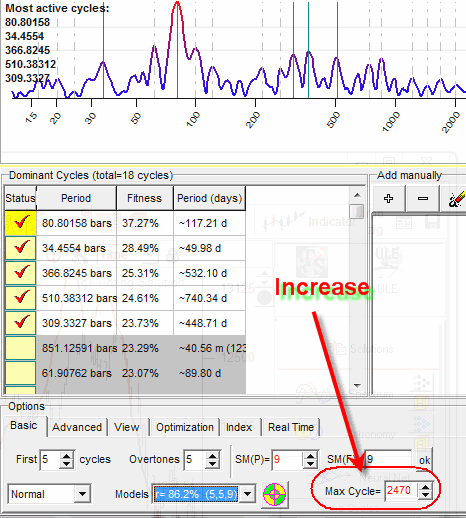
2) Optimize your model once again:

and browse different variations of that model, from this menu:
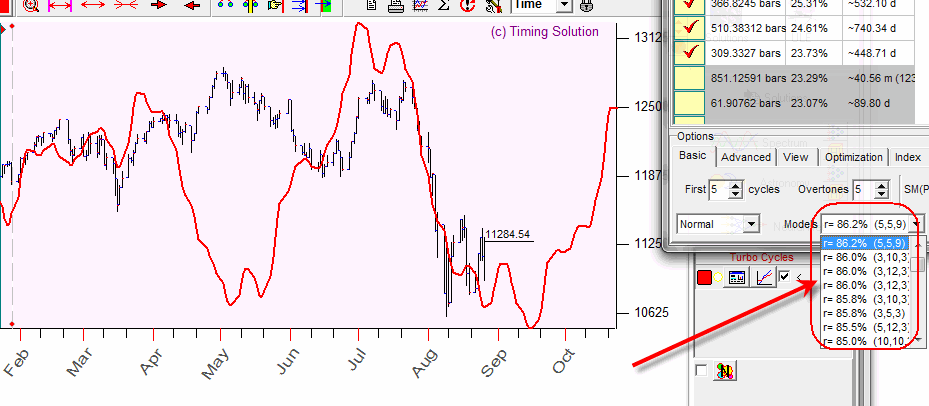
You can also include any cycle that you think is important here. For example, 861 trading days cycle is not recognized by the program as an important one; however you can include it making LEFT mouse click on the periodogram:
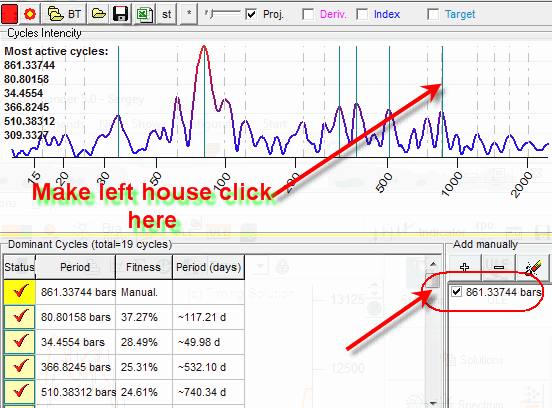
However, this approach does not work all the time, you need to be careful with it.